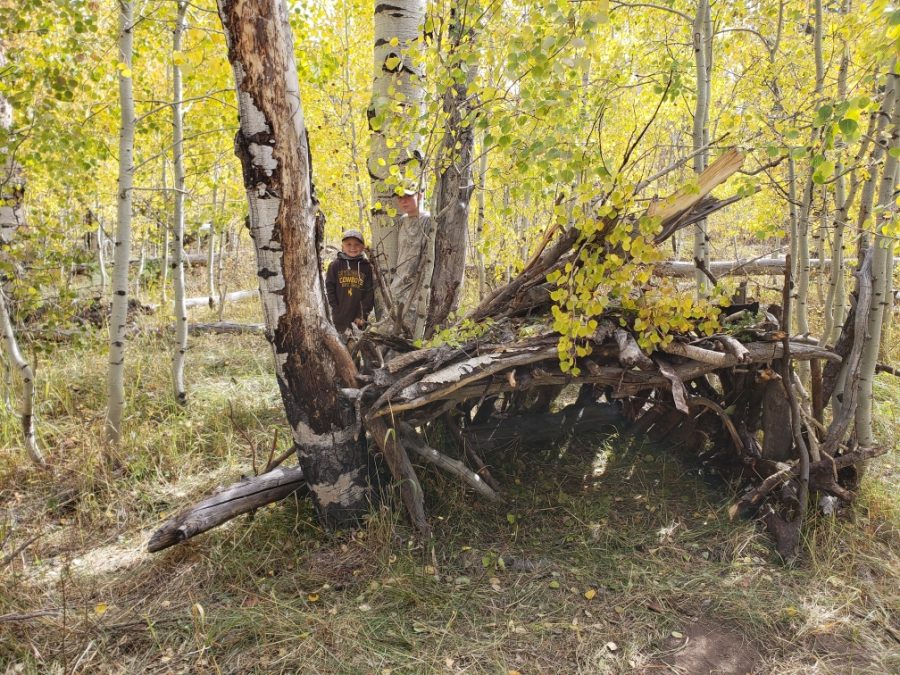Lean-to shelters can save your life
A lean-to shelter, built by the author, stands in between two trees on the Sierra Madre Mountains. McDaniel built the shelter while elk hunting during the 2018 season.
January 18, 2022
The outdoors is a vast place full of many things to enjoy and learn, but it is important to have extra knowledge about safety precautions that might just save your life. Take it from Corbin Dionne, a student from NC, who has turned making lean-to shelters into a hobby- “Growing up and visiting nature with my family was the reason I started.” Dionne knows that this survival technique is crucial in case of emergency, so he practices the skills for fun.
A lean-to is a free standing structure with 3 walls and a slanted roof. These are commonly made out of unfinished wood and/or logs. It is a fairly easy and simple way to undergo several weather conditions.
Remember that this shelter is for serious conditions, and is suited to keep a person alive, not comfortable. Begin the craft by taking two stable pieces of Y-shaped wood, or logs and pound into the ground about 4-6 feet apart. Then take another log and rest it between the previous Y-shaped logs. Fill in the roof area by leaning sticks onto the horizontal piece of wood and sides, and stabilize them by tying them to the skeleton of the lean-to and digging the base into the ground. This will make the structure sturdy, so that it will withstand the wind.
Staying dry is very important, so to prevent leaks in the lean-to, start by adding large chunks of bark, grass, and pine needles to the top of the structure. As you cover the structure, go from bottom to top, and “enough sticks to fill the gaps. Then cover in leaves,” Dionne suggests.
Body heat is absorbed very quickly by the ground. The ground will reduce a person’s body temperature until they are as cold as it is. To prevent this, use pine bows, grass, leaves, or anything fairly comfortable as bedding. The same items can be used for more insulation to cover up with, or (if you have a trash bag) stuff it with the items and it will act as a comforter.
Another thing to keep in mind are ways to reduce the amount of work someone puts into making their shelter. Look for tree limbs, sticks and other items that are close and easy to get to. This will reduce the amount of energy used, and in the long run, be more beneficial to survival.
Of course, you won’t want to have to remember all of this in the case you do find yourself in a bad situation, so make sure to practice this as often as possible. Practicing the skills, as a hobby, will make it easier to accomplish when it’s needed, and save time. Dionne has been “doing it since I was ten,” which makes him ready for taking shelter.

